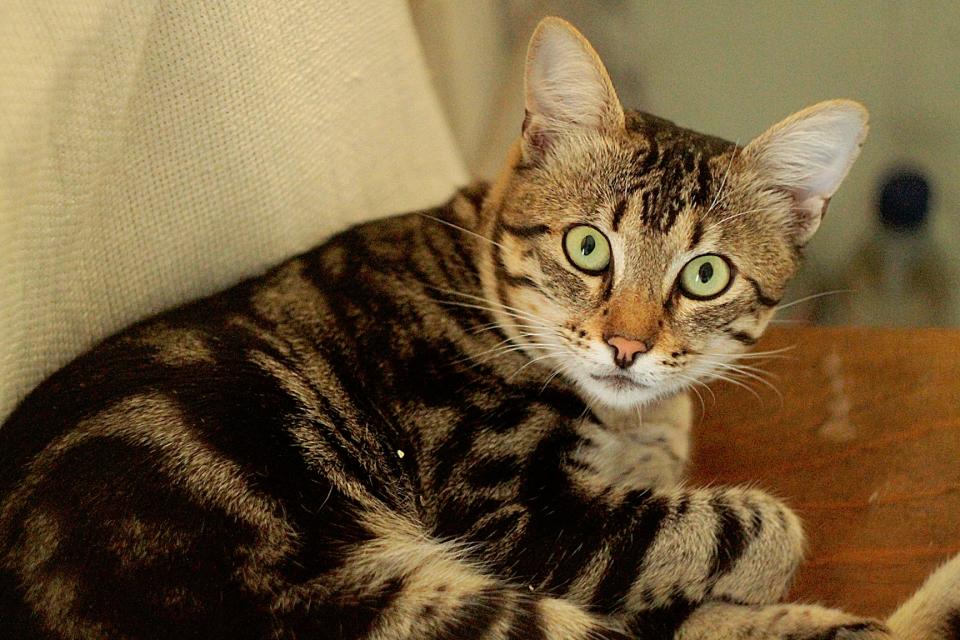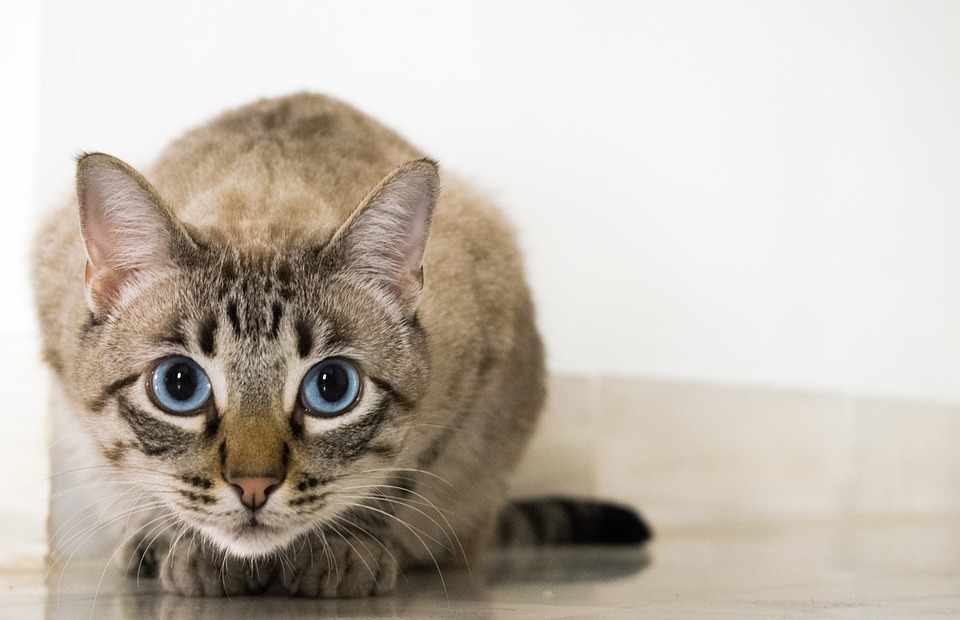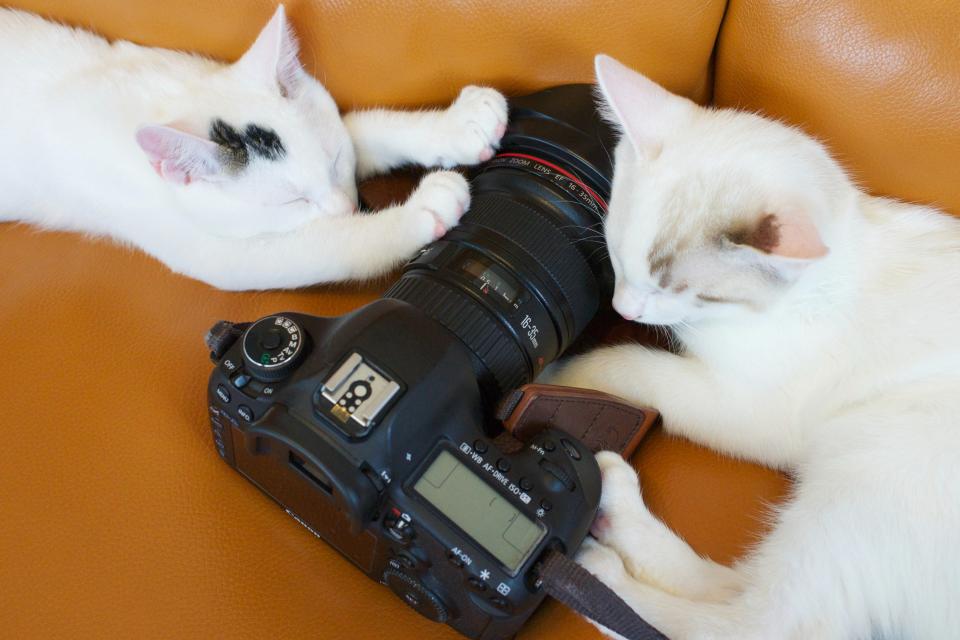This article delves into the fascinating world of cat whiskers, revealing their intricate structure, sensory capabilities, and vital role in a cat's daily life. We'll explore the scientific basis behind their extraordinary sensitivity, examining how they function as sophisticated "feelers" to navigate their environment, detect danger, and even understand their emotions. From their intricate anatomy to their surprising influence on feline behaviour, this exploration will unveil the captivating secrets of cat whiskers.
Part 1: The Whiskers: An Introduction

1.1. What are Whiskers?
Whiskers, also known as vibrissae, are long, stiff hairs that protrude from a cat's face, primarily around the mouth, above the eyes, and on the cheeks. These highly sensitive structures are embedded in follicles that are far deeper than those of regular hair, making them incredibly responsive to even the slightest touch. Unlike ordinary hairs, which are primarily for insulation and aesthetics, whiskers serve a critical sensory function.
1.2. The Structure of Whiskers
- Location: Whiskers are strategically positioned around a cat's face, offering a 360-degree sensory field. This strategic placement provides a comprehensive map of their surroundings, allowing them to detect movement and changes in their environment from all angles.
- Structure: Each whisker is made of keratin, the same protein found in human hair and nails. They are hollow inside and are filled with a soft, fatty core. This hollow structure allows for greater flexibility and responsiveness to pressure and movement.
- Follicles: Unlike ordinary hair, whiskers are rooted in deep, complex follicles that are richly supplied with nerves and blood vessels. These specialized follicles are surrounded by a dense network of nerve endings, known as mechanoreceptors, which are responsible for transmitting sensory information to the brain.
- Muscle Attachments: Each whisker is attached to a tiny muscle, enabling it to move independently, adjusting its position and angle for optimal sensing. This muscle control allows for precise adjustments in whisker orientation, enhancing their sensitivity and providing a more detailed sensory map of the environment.
Part 2: Sensory Capabilities of Whiskers

2.1. Detecting Movement and Vibration
Whiskers are exceptionally sensitive to movement, vibration, and pressure changes in their surroundings. They function as highly tuned "feelers," enabling cats to perceive even the subtlest disturbances in their environment. This sensitivity allows cats to navigate obstacles in low-light conditions, detect prey hidden from view, and even sense the approach of potential threats.
2.2. Navigating in the Dark
The sensitivity of whiskers allows cats to navigate effectively in low-light conditions, relying on tactile cues instead of visual information. They can sense obstacles and objects in their path, even in complete darkness. This ability is particularly useful for hunting in the evening or navigating through dense foliage.
2.3. Assessing Space and Distance
Cats use their whiskers to measure the width of spaces, gauge distances, and determine if they can fit through a narrow opening. By extending their whiskers and feeling for obstructions, they can avoid squeezing into tight spaces that could cause injury. This is particularly useful when exploring confined spaces or navigating through dense vegetation.
2.4. Detecting Prey
Whiskers are essential for hunting and catching prey. They can sense the movement of small creatures and insects, even if they are hidden from view. This ability is crucial for detecting prey in dense undergrowth or under fallen leaves, where visual cues might be limited.
2.5. Sensing Air Currents
Cats can also use their whiskers to sense air currents, which can help them locate prey and understand the direction of wind. This ability is particularly useful for hunting in open areas, where prey might be located at a distance.
Part 3: The Role of Whiskers in Cat Behaviour

3.1. Social Communication
Whiskers play a role in social communication, both within their own species and with humans. Cats use their whiskers to express emotions, intentions, and levels of comfort.
- Forward Whiskers: Forward-pointing whiskers often indicate interest, curiosity, and playfulness. A cat with forward whiskers may be approaching a new object or person with a sense of curiosity and exploration.
- Backward Whiskers: Backward-facing whiskers suggest fear, anxiety, or aggression. A cat with backward whiskers may be feeling threatened or defensive, and it's important to respect their space and avoid any sudden movements.
- Twitched Whiskers: Rapidly twitching whiskers can indicate excitement, anticipation, or a heightened sense of awareness. A cat with twitching whiskers may be about to pounce on a toy or anticipating a treat, indicating a heightened state of alertness and readiness.
3.2. Territorial Boundaries
Cats use their whiskers to establish and defend their territory. They will often rub their whiskers against objects in their surroundings, leaving behind scent signals that mark their domain. These scent signals, combined with the physical contact of their whiskers, convey information about their presence and territorial boundaries to other cats in the area.
3.3. Grooming and Personal Hygiene
Whiskers are essential for grooming. Cats use their whiskers to help them clean and maintain their fur, removing dirt and debris from their faces. The sensitivity of whiskers allows them to feel even the smallest particles of dirt or debris, ensuring that their fur is kept clean and free of irritants.
Part 4: The Importance of Whiskers
4.1. Survival
Whiskers are vital for a cat's survival. They provide essential information about their environment, enabling them to navigate safely, find food, and avoid danger. Their sensory capabilities are crucial for hunting prey, avoiding predators, and navigating through dense vegetation or unfamiliar terrain.
4.2. Sensory Enhancement
Whiskers act as sensory extensions, amplifying a cat's perception of their surroundings and enhancing their ability to interact with their world. They provide a detailed 360-degree map of the environment, allowing cats to sense subtle changes in pressure, movement, and air currents.
4.3. Well-being
Whiskers are an integral part of a cat's well-being. They are connected to a network of nerves and muscles, and any damage to their whiskers can affect their physical and emotional health. Loss of whiskers can impair a cat's ability to navigate, hunt, and interact with their environment, leading to frustration, anxiety, and even physical injury.
Part 5: The Science Behind Whisker Sensitivity
5.1. Nerve Endings and Sensory Organs
Each whisker is connected to a complex network of nerve endings and sensory organs that are highly sensitive to touch and pressure. These sensory organs, known as mechanoreceptors, are responsible for converting physical stimuli into electrical signals that are then transmitted to the brain.
5.2. Rapid Transmission of Information
The nerve endings in a whisker follicle transmit sensory information rapidly to the brain, allowing for quick responses to stimuli. This rapid transmission is crucial for a cat's ability to react quickly to changes in their environment, such as the movement of prey or the approach of danger.
5.3. Brain Processing and Interpretation
The brain interprets the sensory information from the whiskers, creating a detailed picture of the cat's immediate environment. This interpretation involves a complex network of neural pathways, allowing the brain to analyze the data and determine the appropriate response.
Part 6: Caring for Whiskers
6.1. Gentle Handling
It is important to handle a cat's whiskers gently, as they are highly sensitive and can be easily damaged. Rough handling or pulling on their whiskers can cause pain and discomfort, potentially leading to damage to the follicle or nerve endings.
6.2. Avoid Trimming
Trimming or cutting whiskers should be avoided, as it can impair a cat's sensory abilities and cause them discomfort. Trimming whiskers can significantly hinder their ability to navigate, hunt, and interact with their environment, potentially leading to frustration and anxiety.
6.3. Environmental Enrichment
Providing a cat with an enriched environment that offers opportunities for exploration, play, and stimulation can help maintain the health and function of their whiskers. Enriched environments provide opportunities for sensory stimulation, which helps to maintain the sensitivity and responsiveness of whiskers.
Part 7: Whiskers and Veterinary Care
7.1. Damage and Loss
Whiskers can be damaged or lost due to injury, disease, or even stress. Damage to whiskers can occur from various factors, such as accidental cuts, bites, or trauma to the face. Stress and disease can also affect whisker growth and function, leading to hair loss or thinning.
7.2. Medical Conditions
Certain medical conditions can affect whisker growth and function, such as feline distemper and ringworm. These conditions can cause inflammation, infection, or hair loss, affecting the health and function of whiskers.
7.3. Veterinary Evaluation
If a cat experiences a change in their whisker growth or behaviour, it is important to consult a veterinarian for evaluation and treatment. Changes in whisker growth or behaviour can indicate a underlying medical condition that requires diagnosis and treatment.
Part 8: Whiskers: A Window into the Feline Mind
8.1. Understanding Emotions
Whiskers offer insights into a cat's emotional state, providing a glimpse into their inner world. Observing the position and movement of a cat's whiskers can provide valuable clues about their emotional state, helping us understand their feelings and intentions.
8.2. Non-Verbal Communication
Whiskers are a key component of feline non-verbal communication, allowing them to express a range of emotions and intentions. A cat's whiskers, along with other body language cues, provide a rich language that we can learn to decipher and understand.
8.3. Connecting with Cats
By understanding the role of whiskers in cat behaviour, we can gain a deeper appreciation for these remarkable creatures and build stronger bonds with them. Understanding how whiskers function and how they contribute to a cat's overall well-being allows us to better understand their needs and communicate with them effectively.
FAQs
1. Are cat whiskers really that important?
Yes, cat whiskers are incredibly important for their well-being and survival. They provide essential sensory information, enabling them to navigate, hunt, and interact with their environment effectively. Without their whiskers, cats would be significantly handicapped in their ability to perform these essential functions.
2. What happens if a cat loses its whiskers?
Losing whiskers can significantly impact a cat's sensory abilities, making it more difficult for them to navigate, hunt, and even socialize. They may become more clumsy, less confident, and less successful at catching prey. In some cases, loss of whiskers can even lead to anxiety, stress, and behavioral problems.
3. Why do cats have so many whiskers?
The number and position of whiskers vary slightly between individual cats, but they are strategically placed around the face to provide a wide range of sensory input. This allows them to perceive their surroundings in 360 degrees, enabling them to detect movement and changes in their environment from all angles.
4. Can you trim a cat's whiskers?
It is strongly advised against trimming or cutting a cat's whiskers, as it can cause them discomfort and impair their sensory abilities. Trimming whiskers can significantly hinder their ability to navigate, hunt, and interact with their environment, potentially leading to frustration and anxiety.
5. How do whiskers work in water?
While whiskers are primarily sensitive to touch and vibration, they can still provide some sensory information in water. However, their effectiveness may be reduced due to the different properties of water. The resistance and movement of water can affect the sensitivity of whiskers, reducing their ability to detect subtle changes in pressure and movement.
6. Can whiskers help cats sense emotions?
While there is no scientific evidence to suggest that whiskers directly sense emotions, their movement and position can provide valuable insights into a cat's emotional state. By observing the orientation, movement, and tension of whiskers, we can gain a deeper understanding of a cat's feelings and intentions.
7. Are all whiskers the same?
No, all whiskers are not the same. Different types of whiskers have different functions and sensitivities. For example, the whiskers on the cheeks are primarily used for sensing movement, while those above the eyes are more sensitive to pressure and vibration. These variations in structure and function allow cats to gather a more comprehensive sensory map of their environment.
8. How can I help my cat's whiskers stay healthy?
You can help keep your cat's whiskers healthy by providing a safe and stimulating environment, ensuring they have opportunities for exploration and play. It's also essential to avoid using harsh chemicals or cleaning agents near their face. Regular grooming and gentle handling can also help maintain the health and function of whiskers.
Everyone is watching
-

Are Cat Ribs Flexible? Understanding Their Anatomy
CATS & KITTENSThis article delves into the fascinating world of feline anatomy, exploring the flexibility of cat ribs and ho...
-

Can Cats Eat Bananas? (Everything You Need to Know)
CATS & KITTENSThis article dives into the intriguing question of whether cats can safely enjoy the sweet, yellow fruit, bana...
-

Cat Lifespan: How Long Do Cats Live?
CATS & KITTENSThis comprehensive guide explores the factors influencing the lifespan of our feline companions, providing ins...
-

Can Cats Get COVID-19? What You Need to Know
CATS & KITTENSThis article will delve into the fascinating world of feline COVID-19 susceptibility. We'll explore whether ca...
-

Can Cats Eat Eggs? A Complete Guide to Egg Safety for Your Feline Friend
CATS & KITTENSWhen it comes to treating our furry companions, we all want to ensure we're doing what's best for them. Eggs...
